Due to the increasing supply, the smart home market is becoming more and more unmanageable for the customer. In addition to the well-known brands from all over the world, more and more newcomers and niche providers are trying their luck. The question now arises as to which fundamental criteria must be observed when choosing a suitable and, above all, uniform platform.
First and foremost, compatibility is crucial, i.e. how many renowned manufacturers of smart home components are already cooperating with the provider. Investment security goes hand in hand with it.
The product service should also be carefully examined in advance – in particular whether the provider regularly updates the software or firmware of its manufactures. Low-cost providers mostly do not maintain and develop their products, so no regular updates are available after purchase, which in turn are essential for permanent security and data protection, as hackers and other criminals are always looking for new ways to get to their destination. In addition, updates provide new useful functions or even additional compatibility.
If you don’t want to restrict yourself unnecessarily from the start, you should fall back on a smart home platform that supports as many different radio standards as possible. Since the laying of cables is not for everyone, the demand and therefore the supply is primarily concentrated on wireless components. Most manufacturers rely on a specific radio standard that is best suited for their application scenarios. While WLAN, for example, has its strength in fast data transmission and is therefore suitable for streaming videos and films, for example, other radio standards such as DECT ULE are more far-reaching and at the same time more economical – and therefore also suitable for battery operation. Other Smart Home standards include HomeMatic, Homematic IP and ZigBee. Depending on the application, these radio standards have their advantages and disadvantages.
